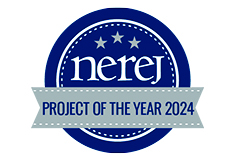News: Spotlights
Posted: June 11, 2009
Professional Credentials
The LEED AP program has always been grounded in the pursuit of excellence and continuous improvement. To continue to meet these goals, GBCI developed a new, multi-faceted credentialing system that ensures that LEED professionals have the latest knowledge and understanding of green building practices and that they are recognized for distinction.
The new LEED professional credentialing program was developed to encourage green building professionals to maintain and advance their knowledge and expertise.
A LEED credential provides employers, policymakers, and other stakeholders with assurances of an individual's current level of competence and is the mark of the most qualified, educated, and influential green building professionals in the marketplace.
These goals had to be balanced with three market challenges:
Staying current: Technology, best practices, and the LEED rating systems evolve rapidly.
Differentiation: A credentialing system that provides for multiple levels of accomplishment and expertise is needed to distinguish among green building professionals with basic, advanced, and extraordinary levels of knowledge.
Specialization: Many green building professionals develop expertise in specific sub-sectors of the industry.
Three fundamental changes to the LEED credentialing program are being phased in throughout 2009:
Three levels of excellence that distinguish practitioners with basic, advanced, and extraordinary levels of knowledge.
Eligibility requirements for all levels of the exam system.
Credentialing maintenance requirements that ensure that LEED professionals have the latest knowledge and understanding of green building practices.
The built environment has a profound impact on our natural environment, economy, health, and productivity. In the United States alone, buildings account for: 72% of electricity consumption, 39% of energy use, 38% of all carbon dioxide (CO2) emissions, 40% of raw materials use, 30% of waste output (136 million tons annually), and 14% of potable water consumption. More statistics on the built environment in the U.S. and the growing size of USGBC membership and LEED are available in our Green Building by the Numbers document. www.usgbc.org/ShowFile.aspx?DocumentID=3340.
Benefits of Green Building
Environmental benefits: Enhance and protect ecosystems and biodiversity, Improve air and water quality, Reduce solid waste, Conserve natural resources
Economic benefits: Reduce operating costs, Enhance asset value and profits, Improve employee productivity and satisfaction, Optimize life-cycle economic performance
Health and community benefits: Improve air, thermal, and acoustic environments, Enhance occupant comfort and health, Minimize strain on local infrastructure, Contribute to overall quality of life
Tags:
Spotlights
MORE FROM Spotlights
The New England Real Estate Journal presents the First Annual Project of the Year Award! Vote today!
The New England Real Estate proud to showcase the remarkable projects that have graced the cover and center spread of NEREJ this year, all made possible by the collaboration of outstanding project teams. Now, it's time to recognize the top project of 2024, and we need your vote!








